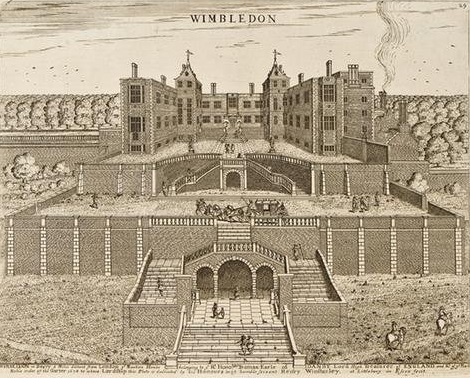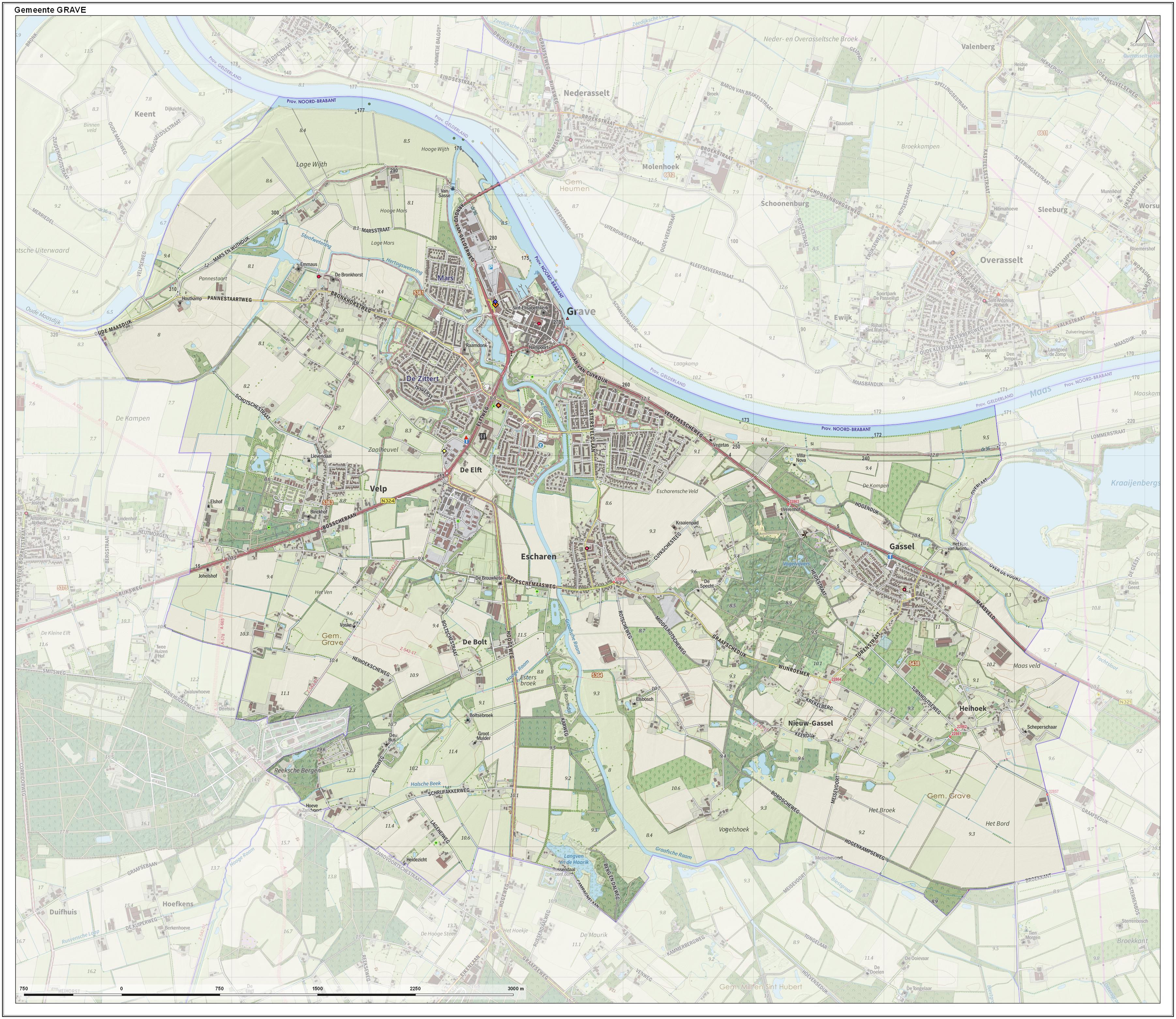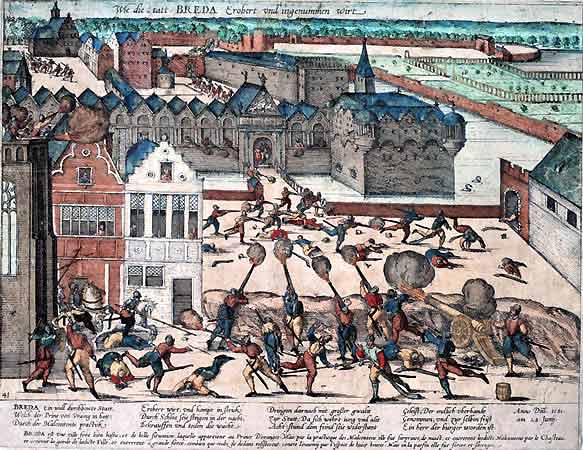|
Siege Of 's-Hertogenbosch
The siege of 's-Hertogenbosch also known as the siege of Bois-Le-DucMarkham pp. 435-38 was an action in 1629, during the Eighty Years' War and the Anglo–Spanish War in which a Dutch and English army captured the city of 's-Hertogenbosch.Knight, Charles Raleigh: ''Historical records of The Buffs, East Kent Regiment (3rd Foot) formerly designated the Holland Regiment and Prince George of Denmark's Regiment''. Vol I. London, Gale & Polden, 1905pp. 69-70/ref> The city had been loyal to the King of Spain since 1579 and was part of the Spanish Netherlands. Background The Twelve Years' Truce ended in 1621. Stadtholder Maurice of Orange had in the meantime played a part in instigating the Thirty Years' War in Germany. The Habsburgs tried to punish the rebellious Dutch Republic by cutting it off from its hinterland by a land blockade. 's-Hertogenbosch was the main fortress in this perimeter and enormous sums of money were poured into the improvement of its defences. As the ground surr ... [...More Info...] [...Related Items...] OR: [Wikipedia] [Google] [Baidu] |
Eighty Years' War
The Eighty Years' War or Dutch Revolt (; 1566/1568–1648) was an armed conflict in the Habsburg Netherlands between disparate groups of rebels and the Spanish Empire, Spanish government. The Origins of the Eighty Years' War, causes of the war included the Reformation, Centralised state, centralisation, excessive taxation, and the rights and privileges of the Dutch nobility and cities. After Eighty Years' War, 1566–1572, the initial stages, Philip II of Spain, the sovereign of the Netherlands, deployed Army of Flanders, his armies and Eighty Years' War, 1572–1576, regained control over most of the rebel-held territories. However, Spanish Fury, widespread mutinies in the Spanish army caused a general uprising. Under the leadership of the exiled William the Silent, the Catholic and Protestant-dominated provinces sought to establish religious peace while jointly opposing the king's regime with the Pacification of Ghent, but the Eighty Years' War, 1576–1579, general rebelli ... [...More Info...] [...Related Items...] OR: [Wikipedia] [Google] [Baidu] |
Hinterland
Hinterland is a German word meaning the 'land behind' a city, a port, or similar. Its use in English was first documented by the geographer George Chisholm in his ''Handbook of Commercial Geography'' (1888). Originally the term was associated with the area of a port in which materials for export and import are stored and shipped. Subsequently, the use of the word expanded to include any area under the influence of a particular human settlement. Geographic region * An area behind a coast or the shoreline of a river. Specifically, by the ''doctrine of the hinterland,'' the hinterland is the inland region lying behind a port and is claimed by the state that owns the coast. * In shipping usage, a port's hinterland is the area that it serves, both for imports and for exports. * The term is also used to refer to the area around a city or town. * More generally, ''hinterland'' can refer to the rural area economically tied to an urban catchment area. The size of a hinterland can depen ... [...More Info...] [...Related Items...] OR: [Wikipedia] [Google] [Baidu] |
Dommel
The Dommel is a small river in Belgium and the Netherlands, left tributary of the Dieze. It is 120 km long, of which 85 km are in the Netherlands. The Dommel takes in water from the Keersop, Tongelreep, Run (stream), Run, Gender (stream), Gender and Kleine Dommel streams and merges at 's-Hertogenbosch with the Aa (Meuse), Aa stream to form the river Dieze, which subsequently flows towards the Meuse. The main cities and towns along the Dommel's course are Peer, Neerpelt, Valkenswaard, Dommelen, Eindhoven, Son en Breugel, Sint-Oedenrode, Boxtel, Sint-Michielsgestel and 's-Hertogenbosch. Drainage basin The drainage basin of the Dommel belongs to that of the Meuse. To the west of is the basin of the Donge (river), Donge, which also belongs to that of the Meuse. To the south the basin of the Dommel borders that of the Schelde. To the east is that of the Aa. Further to the south a number of rivers flow into the Meuse much further upstream. History Former glory The Dommel often lo ... [...More Info...] [...Related Items...] OR: [Wikipedia] [Google] [Baidu] |
Walter Scott, 1st Earl Of Buccleuch
Walter Scott, 1st Earl of Buccleuch, 2nd Baron Scott of Buccleuch (before 1606 – 20 November 1633) was a Scottish nobleman. He was the son of Walter Scott, 1st Lord Scott of Buccleuch (c. 1549–1611), and Mary Kerr, a daughter of Mark Kerr, 1st Earl of Lothian. Scott had several siblings, including his brother Francis Scott, who succeeded him as the 2nd Earl of Buccleuch. The family played a prominent role in the Border regions of Scotland, and Walter Scott, through his inherited titles and connections, continued the tradition of political and military involvement. His marriage to Lady Mary Hay, daughter of Francis Hay, 9th Earl of Erroll, added to the family's prestigious alliances. The Scott family's influence endured through generations, contributing significantly to the historical tapestry of Scottish nobility. He succeeded his father as Lord Scott of Buccleuch on 15 December 1611. He was created Earl of Buccleuch, with the subsidiary title Baron Scott of Whitcheste ... [...More Info...] [...Related Items...] OR: [Wikipedia] [Google] [Baidu] |
William Brog
Colonel Sir William Brog (? - 13 March 1636) was a Scottish soldier in the service of the Kingdom of Scotland and the Dutch Republic. His early life is, at the moment, completely obscure and he only appears on record in 1588 when he rose to the rank of sergeant major in the regiment of Colonel Bartholomew Balfour. He was promoted to colonel of the first regiment of the Scots-Dutch Brigade in 1606 and held the position until 1636. Thus, he probably holds the record for the longest-serving Scottish colonel during the Eighty Years' War and the Thirty Years' War. Early Career, c. 1588-1600 Like his early life, Brog's early career is also shrouded in mystery and confusion. On the one hand, James Ferguson records Brog as receiving his commission as captain on 31 March 1590 in succession to Captain David Trail. In the next sentence, Ferguson notes that he was in fact already sergeant-major (the modern equivalent of major) in 1588. That he was a sergeant-major in 1588 is further proved ... [...More Info...] [...Related Items...] OR: [Wikipedia] [Google] [Baidu] |
Sir Charles Morgan (army Officer)
Sir Charles Morgan (1575–1642) was a professional soldier from Monmouthshire in Wales who spent most of his career serving with the Dutch States Army during the Eighty Years War and eventually settled there. Service in the Netherlands Morgan began his military career in the Netherlands during the Dutch Revolt. There he married Elizabeth, the daughter of William the Silent's secretary, Philips of Marnix. He was a part of the joint Anglo-Dutch expedition which captured the Spanish city of Cadiz in 1596. Under the command of Sir Francis Vere, Morgan fought at the Battle of Nieuwpoort in 1600 and in 1601 served in the defence of the city of Ostend. Morgan left the besieged city in 1603 to receive a knighthood from James I in England, and returned before the city was surrendered to the Spanish on 20 September 1604. Justice of the peace After the fall of Ostend, Morgan returned to Wales and served as a Justice of the peace (JP) in Monmouthshire. He was heavily criticised by the ... [...More Info...] [...Related Items...] OR: [Wikipedia] [Google] [Baidu] |
Edward Cecil, 1st Viscount Wimbledon
Edward Cecil, 1st Viscount Wimbledon (29 February 1572 – 16 November 1638) was an English military commander and a politician who sat in the House of Commons at various times between 1601 and 1624. Life Cecil was the third son of Thomas Cecil, 1st Earl of Exeter, and his wife, Dorothy Neville, daughter of John Neville, 4th Baron Latimer, by his wife, Lucy Somerset, daughter of Henry Somerset, 2nd Earl of Worcester. He was a grandson of Queen Elizabeth's great minister William Cecil, 1st Baron Burghley. Cecil served with the English forces in the Netherlands between 1596 and 1610, becoming a captain of foot in 1599. In May 1600 he was appointed to a troop of cavalry, which he commanded at the battle of Nieuport, under Sir Francis Vere. In 1601 he commanded a body of one thousand men raised in London for the relief of Ostend, then besieged by the Spanish, and on his return in September was knighted by Queen Elizabeth. He was elected Member of Parliament for Aldborough in ... [...More Info...] [...Related Items...] OR: [Wikipedia] [Google] [Baidu] |
Horace Vere
Horace Vere, 1st Baron Vere of Tilbury (1565 – 2 May 1635) was an English army officer who served in the Eighty Years' War and the Thirty Years' War. A brother of Francis Vere, he was sent to the Electoral Palatinate by James VI and I in 1620. He was subsequently elevated to the peerage of England as "Baron Vere of Tilbury", which became extinct after he died without a male heir. Family Horace Vere, born in 1565, was the fourth son of Geoffrey Vere of Crepping Hall, Essex, a younger son of John de Vere, 15th Earl of Oxford, and Elizabeth Trussell. His mother was Elizabeth Hardekyn (d. December 1615), daughter of Richard Hardekyn (d. 1558) of Wotton House near Castle Hedingham. He had three brothers, John Vere (c. 1558 – 1624) of Kirby Hall near Castle Hedingham, Sir Francis Vere (born c. 1560), and Robert Vere (b. 1562), and a sister, Frances Vere (born 1567), who married, as his second wife, the 'colonial adventurer and author', Sir Robert Harcourt (1574/5 – 1631), ... [...More Info...] [...Related Items...] OR: [Wikipedia] [Google] [Baidu] |
Grave, Netherlands
Grave (; formerly ''De Graaf'') is a city and former municipality in the Dutch province of North Brabant. The former municipality had a population of in . Grave is a member of the Dutch Association of Fortified Cities. The former municipality included the following towns: Grave (capital), Velp, Escharen and Gassel. Grave, Boxmeer, Cuijk, Mill en Sint Hubert, and Sint Anthonis merged into the new municipality of Land van Cuijk on 1 January 2022. History Grave received city rights in 1233. The former municipality of Grave was formed in the Napoleonic era (1810) and coincided with the fortified Grave and immediate surroundings. The history of the town was thus linked to that of the place. This changed in 1942. Then there was a reclassification place where the municipality Grave was expanded with the previously independent municipalities Velp and Escharen. Moreover, in 1994 the neighboring municipality of Beers was abolished and a part thereof, the parish Gassel ... [...More Info...] [...Related Items...] OR: [Wikipedia] [Google] [Baidu] |
Siege Of Den Bosch 1629 - Nouvelle Carte Representant La Ville De Boldvc En Plan, Avec Ses Rempars, Fossez, Forteresses D'alentour, Etc (J
A siege () . is a military blockade of a city, or fortress, with the intent of conquering by attrition, or by well-prepared assault. Siege warfare (also called siegecrafts or poliorcetics) is a form of constant, low-intensity conflict characterized by one party holding a strong, static, defensive position. Consequently, an opportunity for negotiation between combatants is common, as proximity and fluctuating advantage can encourage diplomacy. A siege occurs when an attacker encounters a city or fortress that cannot be easily taken by a quick assault, and which refuses to surrender. Sieges involve surrounding the target to block provision of supplies and reinforcement or escape of troops (a tactic known as "investment"). This is typically coupled with attempts to reduce the fortifications by means of siege engines, artillery bombardment, mining (also known as sapping), or the use of deception or treachery to bypass defenses. Failing a military outcome, sieges can often be deci ... [...More Info...] [...Related Items...] OR: [Wikipedia] [Google] [Baidu] |
Siege Of Breda (1624)
The siege of Breda of 1624–1625 occurred during the Eighty Years' War. The siege resulted in Breda, a Dutch Republic, Dutch fortified city, falling into the control of the Army of Flanders. Background Breda was one of the strongest cities in the defence of the Republic between the States of Holland and royal Brabant. The city was strategically located on a navigable river, the Mark (Dintel), Mark, and near several roads. Henry III of Nassau, Lord of Breda from 1509 to 1538, had been commissioned by Charles V, Holy Roman Emperor, Charles V to travel through Europe. In Italy, he came into contact with modern defences. Thus, in 1531 he inspired the construction of the late medieval style walls of Breda. These were later replaced by modern fortifications. In 1587 and 1622, the defences were further expanded and updated. The Breda fortress consisted of a very high earthen thoroughfare with 15 bastions and a moat. The canalG. G. van der Hoeven: ''Geschiedenis der vesting Breda'' ... [...More Info...] [...Related Items...] OR: [Wikipedia] [Google] [Baidu] |
Breda
Breda ( , , , ) is a List of cities in the Netherlands by province, city and List of municipalities of the Netherlands, municipality in the southern part of the Netherlands, located in the Provinces of the Netherlands, province of North Brabant. The name derived from ''brede Aa'' ('wide Aa' or 'broad Aa') and refers to the confluence of the rivers Mark (Dintel), Mark and Aa of Weerijs, Aa. Breda has 185,072 inhabitants on 13 September 2022 and is part of the Brabantse Stedenrij; it is the tenth largest city/municipality in the country, and the third largest in North Brabant after Eindhoven and Tilburg. It is equidistant from Rotterdam and Antwerp. As a Defensive wall, fortified city, it was of strategic military and political significance. Although a direct fiefdom of the Holy Roman Emperor, the city obtained a City rights in the Low Countries, municipal charter; the acquisition of Breda, through marriage, by the House of Orange-Nassau, House of Nassau ensured that Breda would be ... [...More Info...] [...Related Items...] OR: [Wikipedia] [Google] [Baidu] |




